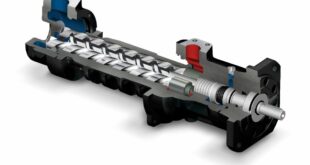Process valves, including diaphragm valves, used in the pharmaceutical industry are subjected to some of the toughest conditions in manufacturing. Reliability and consistency of every component is crucial for pharmaceutical companies because it directly influences the overall product quality and process reliability. What factors, then, should be considered to ensure the correct selection of manual valves every time?
From standard two-port valve setups to configurations that incorporate multiple valves into a single solution, choosing the right design can affect product quality, the overall process footprint, pipework complexity, as well as minimising dead space. Optimising valves for their application ensures the best performance, precision dosing and repeatability, all of which deliver process reliability and uniformity. Similarly, valves need to be able to handle the process fluids as well as the sterilisation processes used between production runs.
Valves that include visual position indicators enable precise control and repeatability, which are important as each adjustment can impact the final product. The ability to set limits on the valve’s stroke length enables extreme settings to be avoided, ensuring minimum and maximum flows are maintained.
To ensure that maintenance and safety procedures are also adhered to, Bürkert valves include locking features such as lock out, tag out (LOTO) to protect against accidental and unauthorised adjustments during operation and maintenance.
Testing diaphragm valves for enhanced performance
When a diaphragm valve is required, the choice of materials impacts the reliability of the component and the mean time between failures (MTBF). Designers of pharmaceutical processes should ensure that the diaphragms used in valves are capable of offering the longest possible service life, can withstand the ingredients used in production, and can be easily replaced when necessary.
However, when the time does come to replace a diaphragm, it’s vital that the correct procedure is carried out as quickly as possible and only by trained personnel. Bürkert offers a diaphragm replacement service or can provide training for a customer’s existing team.
To ensure that diaphragm valves are constructed with the most appropriate materials for a long, reliable service life, Bürkert provides access to its multi-medium testing facility. Here, valves with orifice sizes up to DN100 are tested under realistic conditions to optimise the service life and reliability of all components in direct contact with the media.
 Engineer News Network The ultimate online news and information resource for today’s engineer
Engineer News Network The ultimate online news and information resource for today’s engineer



